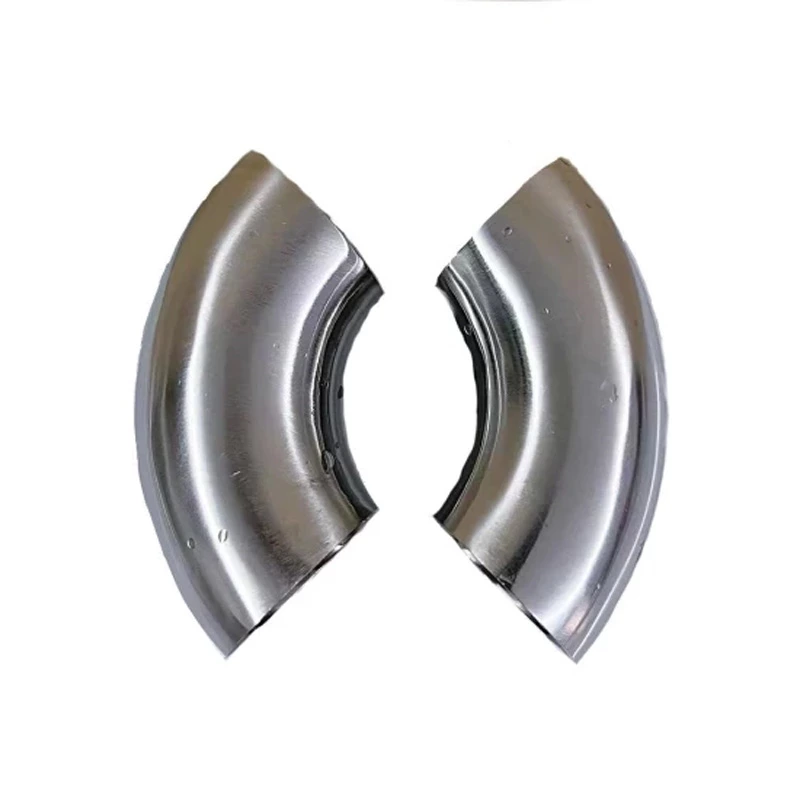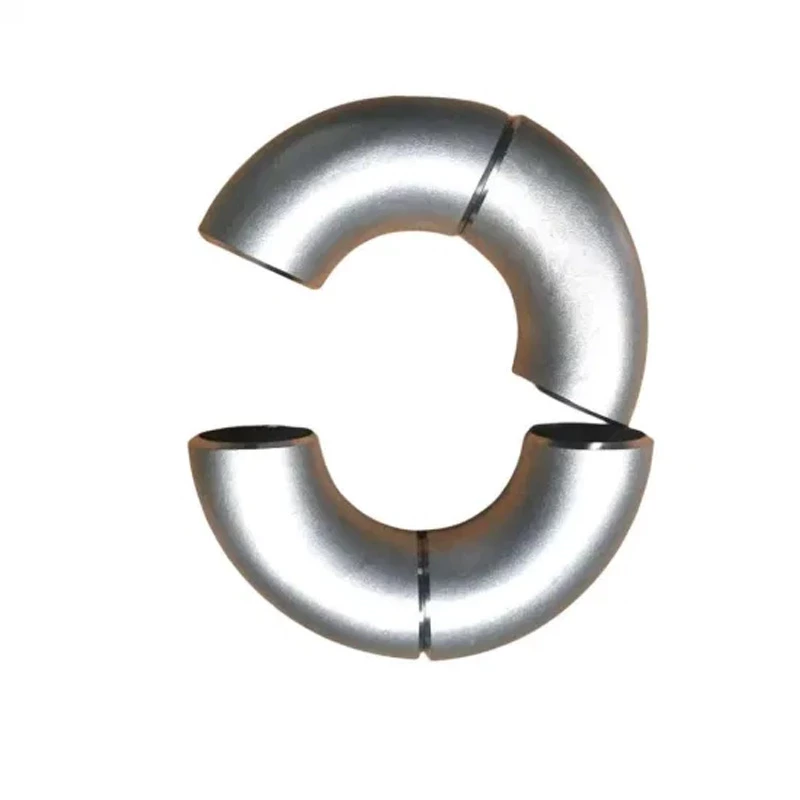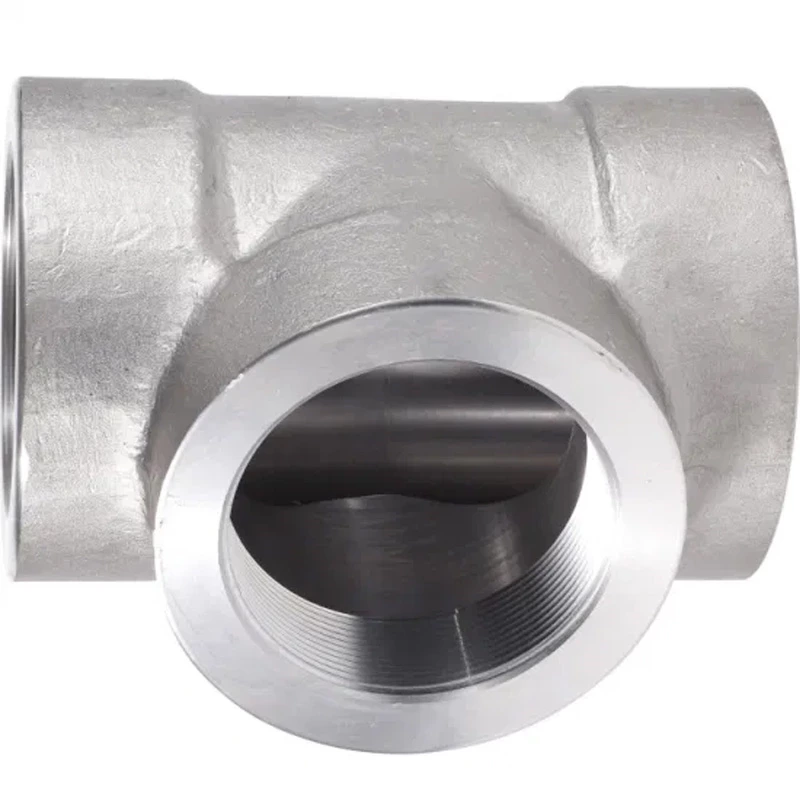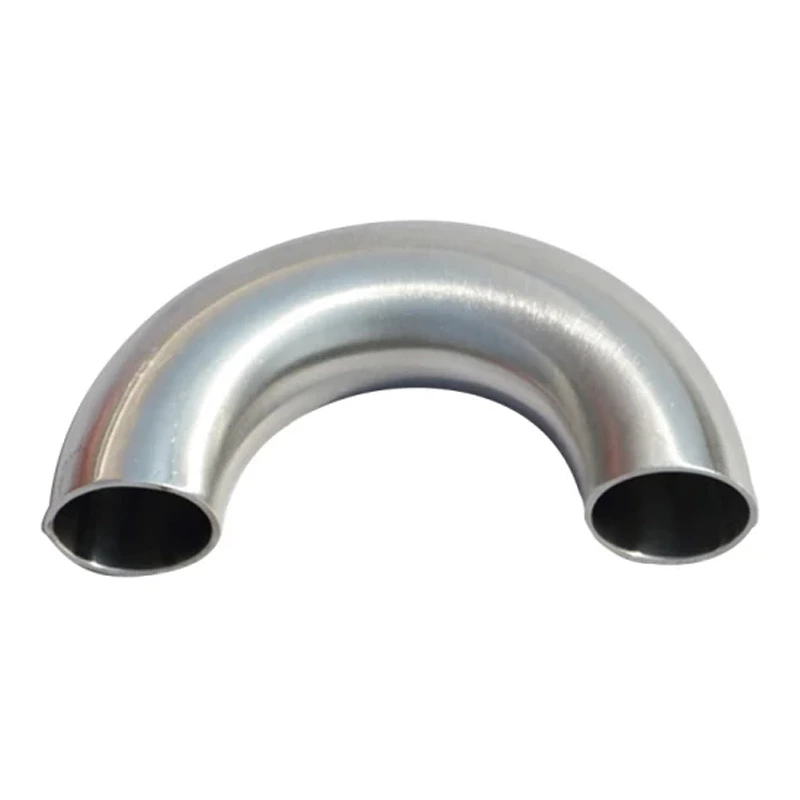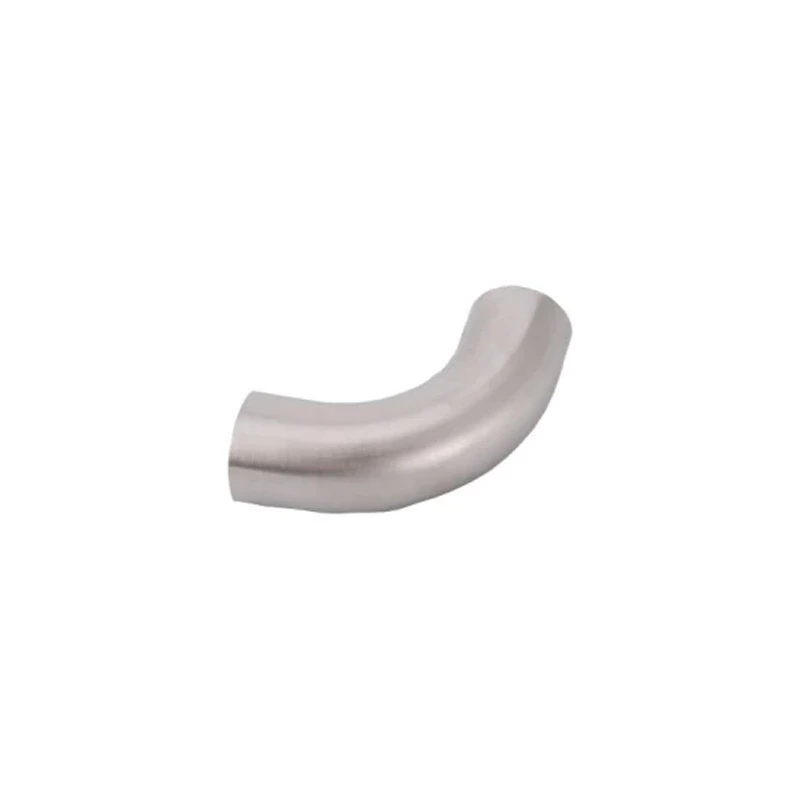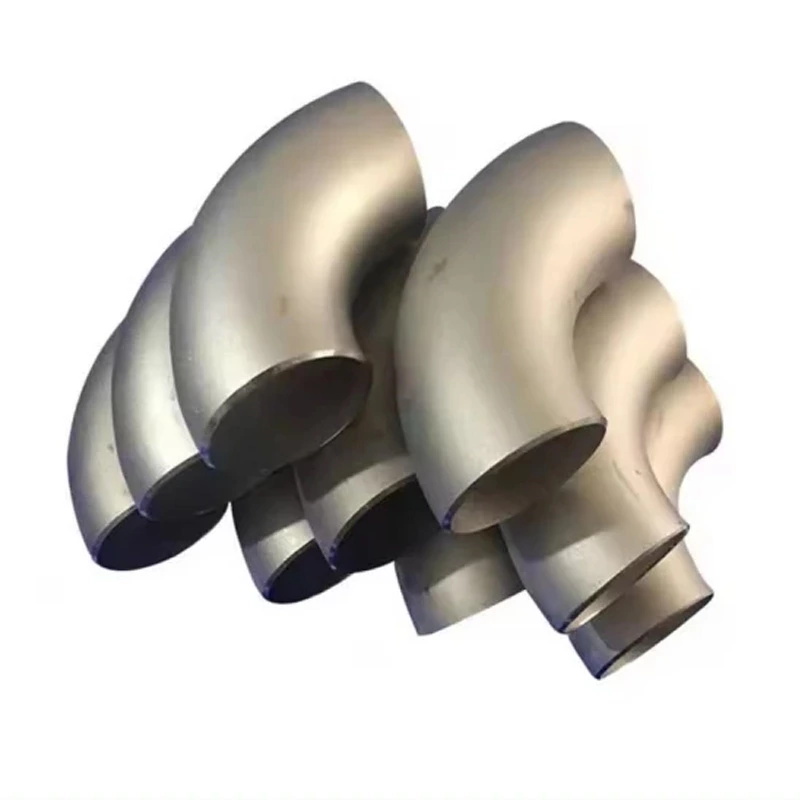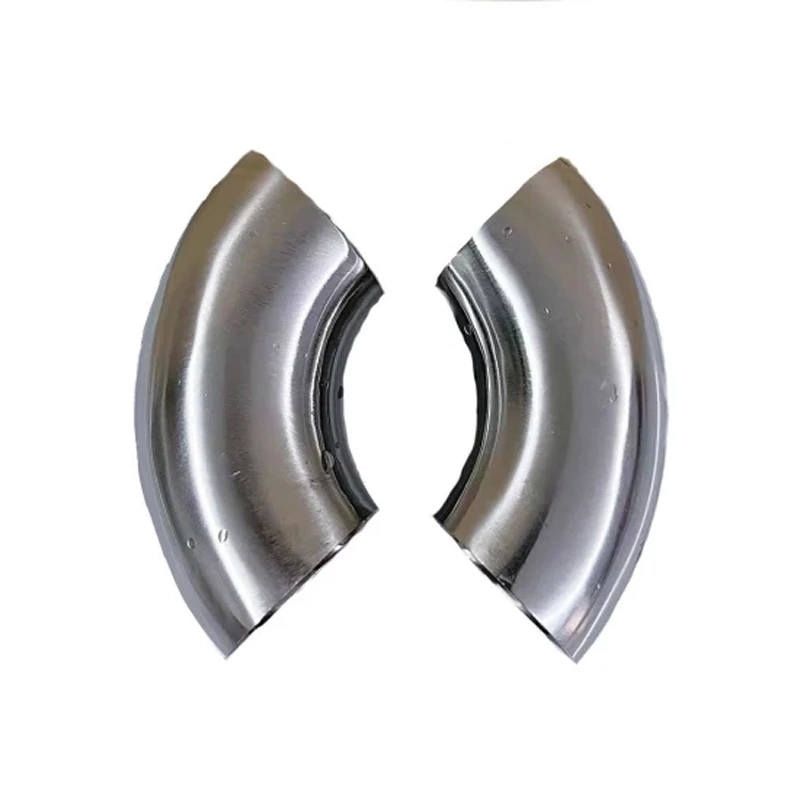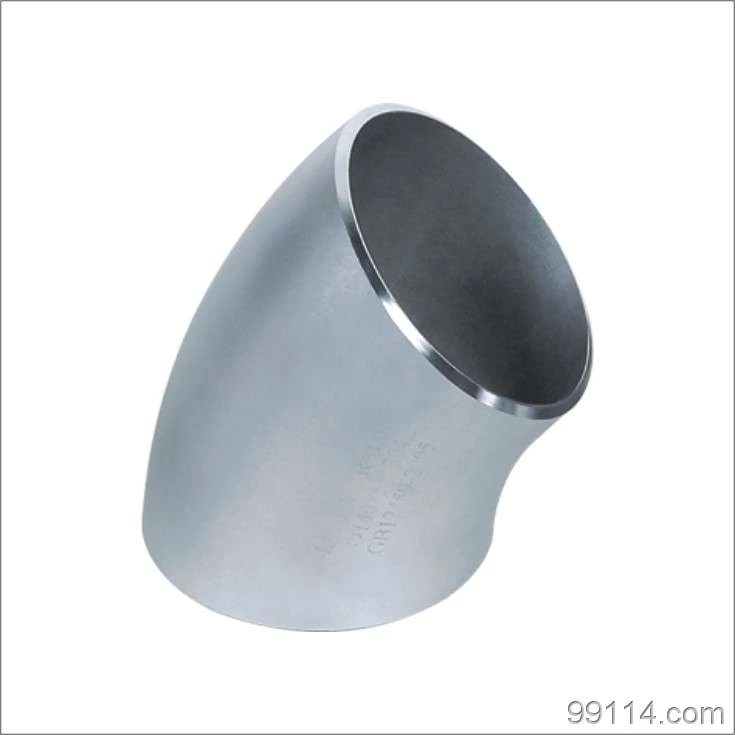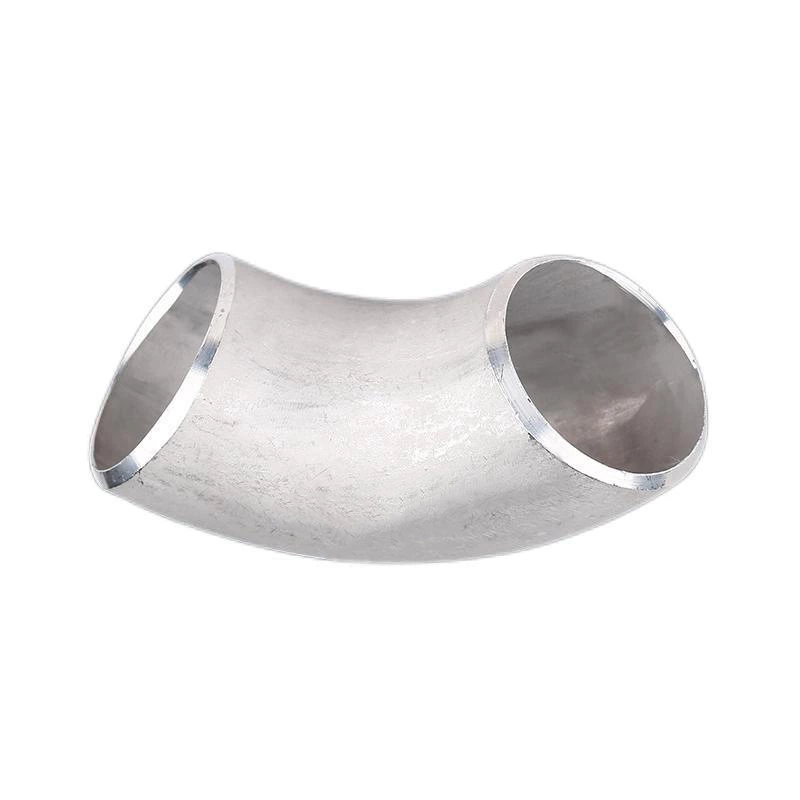Appearance Treatment Matters When Producing Stainless Steel Pipe Fittings
The basic process of Stainless Steel Weld Elbow forming technology is: first weld a polygonal ring shell with a polygonal cross section or a polygonal fan-shaped shell closed at both ends, fill the interior with pressure medium, apply internal pressure, and the cross section gradually changes from polygon to circle under the effect of internal pressure, and finally becomes a circular ring shell. According to needs, a circular ring shell can be cut into 4 90° elbows or 6 60° elbows or other standard stainless steel elbows. This process is suitable for making any standard large elbows with a ratio of the elbow middle diameter to the stainless steel elbow inner diameter greater than 1.5. It is an ideal method for making large pressure-bearing elbows at present.
The following introduces the appearance treatment matters when producing stainless steel pipe fittings:
1. Diameter problem Because the diameter of the seamless elbow will be slightly wrong during the push processing, but the current production process of stainless steel elbow manufacturers can all be within the national standard range. They have made the diameter of the elbow almost error-free and beautiful through the bayonet.
2. Internal and external scratches and grinding. The scratches we made during the transfer and pushing process were smoothed out in the other party's pipe fittings factory. The slightly larger parts were welded and repaired and then polished to make them flawless.
3. Anti-rust paint treatment. The anti-rust paint here is blended paint, and the quality is not very good. But in other countries, the anti-rust paint is hundreds of yuan per barrel. The painting method is also to dip the paint in the pool instead of brushing it, and then all places are evenly painted. After it dries, it is sprayed, and an iron certificate with a magnet is attached to the seamless elbow and packed in the dust-free workshop.
Next, let's talk about the production process of stainless steel elbows:
1. Stainless steel elbows are the weak link in the pipe system. The performance of the pipeline is mainly determined by the working capacity of the stainless steel elbows.
2. The process parameters that affect the geometric shape of stainless steel elbows are: the material, wall thickness and outer diameter of the blank for pushing, the material and shape of the mandrel head, the heating temperature and its distribution, and the pushing speed.
3. The working capacity of stainless steel elbows is related to the stress state they are in. Calculation and on-site measurement of the working stress of pipe fittings found that the arc starting point of stainless steel elbows is particularly sensitive to external loads. In addition to the external loads such as internal pressure and deadweight, the main external loads are caused by the thermal expansion of the pipe metal during the start-up process, the vibration of the pipe system, and the abnormal operation of the support bracket.
4. When the arc starting section of the stainless steel elbow is a butt weld, these changing external loads will cause the weld to be in a complex stress state, seriously weakening the weld strength, reducing the working capacity of the stainless steel elbow, and shortening the service life of the stainless steel elbow. For this reason, from a design perspective, the interface of the butt welded stainless steel elbow is changed to a straight section butt, that is, the design of a stainless steel elbow with a straight section is conducive to the butt weld, improving the quality of the weld, and improving the service life of the stainless steel elbow.
5. Different factors have different effects on stainless steel elbows. They need to be used in the corresponding ways and methods during use. The specific use value and function of stainless steel elbows in use.
6. The principle for determining the heating temperature of stainless steel elbows is that the material is above the austenitizing temperature, and the main compressive stress of the inner wall of the elbow is less than the limit of the material at this temperature during pushing.
